
| Royal Jewel (one synonym : Nacaduba obscura Grose-Smith, 1894) LUCIINI, THECLINAE, LYCAENIDAE, PAPILIONOIDEA | (donherbisonevans@yahoo.com) and Stella Crossley |

(Photo: courtesy of Bob Miller and Ian Hill)

| Royal Jewel (one synonym : Nacaduba obscura Grose-Smith, 1894) LUCIINI, THECLINAE, LYCAENIDAE, PAPILIONOIDEA | (donherbisonevans@yahoo.com) and Stella Crossley |

(Photo: courtesy of Bob Miller and Ian Hill)
These Caterpillars are pale greenish brown and hairy when small, but later become green with a white dorsal band.

They feed on :
Sometimes the Caterpillars are attended by ants, but not always.
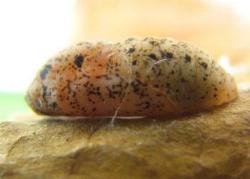
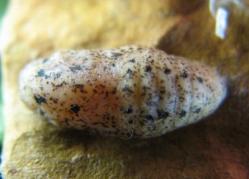
The pupa is formed naked, and is held by the tail and the centre by a silk girdle onto the foodplant.
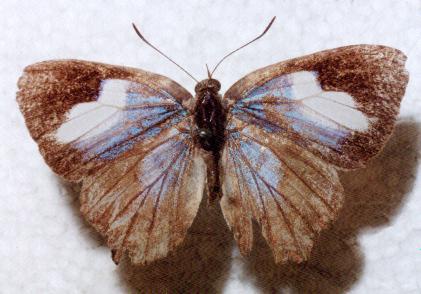
The female adults are black with a blue iridescence around the bases of the wings, and with a large white patch in the centre of each forewing.
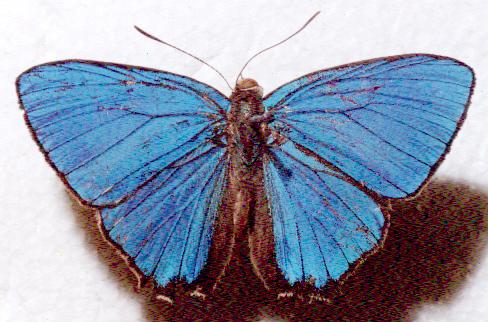
The male adults are an iridescent blue on top, shading to black at the margins. Both sexes have the veins at the margins of the hindwings extended.
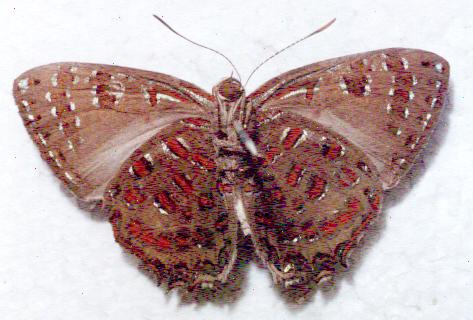
Underneath, they are brown with rows of rust-coloured spots outlined in black and iridescent green.
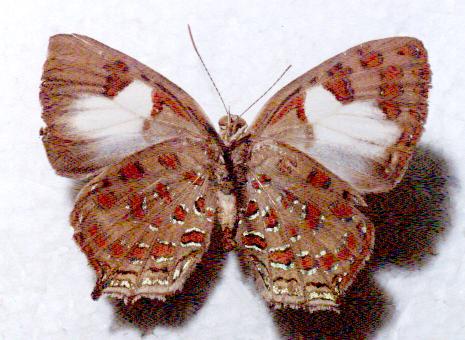
The females also have a large white patch under the centre of each forewing. The butterflies have a wing span of about 3 cms.
The eggs of this species are pale green and dome shaped with ridges. They are laid singly on leaves, stems and buds of the foodplant.
The species occurs as several subspecies in
and in Australia as the subspecies rovena Druce, 1891,
Further reading :
Michael F. Braby,
Butterflies of Australia,
CSIRO Publishing, Melbourne 2000, vol. 2, pp. 660-661.
Carl Linnaeus,
Insecta Lepidoptera,
Systema Naturae,
Volume 1, Edition 10 (1760), Class 5, Part 3, p. 485, No. 166.
 caterpillar |  butterflies |  Lepidoptera |  moths |  caterpillar |
(updated 9 June 2008, 13 October 2025)